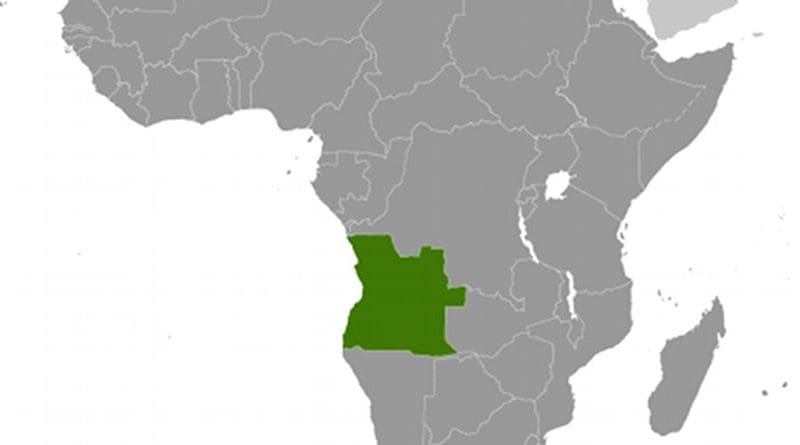Energy Cooperation Between Angola And Germany Heats Up – OpEd
By Helena Bird
In the face of an increasingly volatile global energy landscape, cooperation between nations is not just beneficial; it has become an absolute necessity. A testament to this fact is the deepening alliance between two seemingly dissimilar countries, Germany, a seasoned leader in the global economy, and Angola, an African nation rich in natural resources. Both countries are aligning their goals towards a promising and sustainable energy future, which may well set a global precedent.
Historically, Angola has been heavily reliant on its oil industry, which accounted for roughly one-third of the country’s GDP in the third quarter of 2021. However, this dependence has had its drawbacks, as the national economy has been susceptible to fluctuations in global oil prices. A recent uptick in oil prices, primarily due to the Russia-Ukraine war, has been beneficial for Angola, but the country recognizes the transient nature of such gains. Given these circumstances, Angola is now actively seeking ways to diversify its economy and reduce its dependence on oil.
Consequently, the nation has shifted its gaze towards the vast potential of renewable energy sources, hoping to tap into the abundance of natural resources it has been endowed with. The main thrust of this diversification strategy is the production of green hydrogen, which is a clean, renewable source of energy. Angola’s state-owned energy company, Sonangol, has partnered with German firms Gauff Engineering and Conjuncta to pioneer this initiative.
Germany’s interest in this project is far from coincidental. As one of the world’s largest economies, it is persistently seeking new sources of renewable energy to supplement its grid and reduce its carbon footprint. Germany’s energy policy is increasingly focused on the use of renewable energy, and the Angolan project aligns perfectly with these goals.
The primary draw of green hydrogen lies in its exceptional environmental credentials. It is a clean form of energy that produces water as the only by-product. Moreover, green hydrogen can be generated using renewable energy sources, ensuring a sustainable and almost inexhaustible supply. Importantly, green hydrogen can be stored for long periods, providing a buffer against supply disruptions or demand surges.
Gauff Engineering is no newcomer to Angola. The German company has been present in the country for over two decades, building crucial infrastructure projects and gaining intimate knowledge of the country’s geology and waterways. This experience places Gauff Engineering in a unique position to leverage Angola’s potential for green hydrogen production.
A pivotal factor in the green hydrogen initiative is the Lauca hydroelectric plant, one of the largest in Angola. The plant harnesses the potential of the Cuanza River, a robust waterway that cuts through the landscape. Given recent rainfall patterns, Angola’s hydroelectric reservoirs are at full capacity, further boosting the prospects for green hydrogen production.
Germany, on the other hand, is keen on utilizing green hydrogen to supplement its energy grid. The country is well aware of the limitations of solar and wind energy, primarily their variability and dependence on weather conditions. Green hydrogen, due to its storability, can provide a reliable back-up, ensuring consistent energy availability even when solar and wind energy production dips.
While Germany has initiated similar projects in Nigeria and Saudi Arabia, the initiative in Angola has a distinctive advantage. Thanks to the existing hydroelectric power infrastructure, green hydrogen production can commence much sooner. This means the energy output from Angola can start flowing into Germany’s grid in 2024 making them Germany’s first green hydrogen supplier and speeding up Germany’s transition towards renewable energy.
Despite the obvious benefits, the shift from fossil fuels to green hydrogen is far from straightforward. Both Germany and Angola will have to overcome numerous challenges, including technical hurdles, policy constraints, and economic considerations. The potential impact on local communities, particularly those living in the vicinity of the Lauca plant, will also xneed to be carefully managed.
Nonetheless, the energy cooperation between Angola and Germany serves as an inspiring example of how international partnerships can contribute to a more sustainable energy future. By tapping into Angola’s hydroelectric potential for green hydrogen production, the two countries are making significant strides towards achieving their shared energy goals.
This collaboration offers a model for other countries looking to diversify their energy sources and reduce their reliance on fossil fuels. Furthermore, it underscores the importance of international cooperation in the face of global challenges such as climate change. If successful, this project could catalyse similar initiatives worldwide, potentially reshaping the global energy landscape in the process.
The flourishing cooperation between Angola and Germany promises to drive progress in energy diversification and security, laying a strong foundation for a more sustainable, cleaner energy future for both nations. As the world grapples with the twin challenges of energy security and environmental sustainability, such pioneering initiatives offer a beacon of hope.

